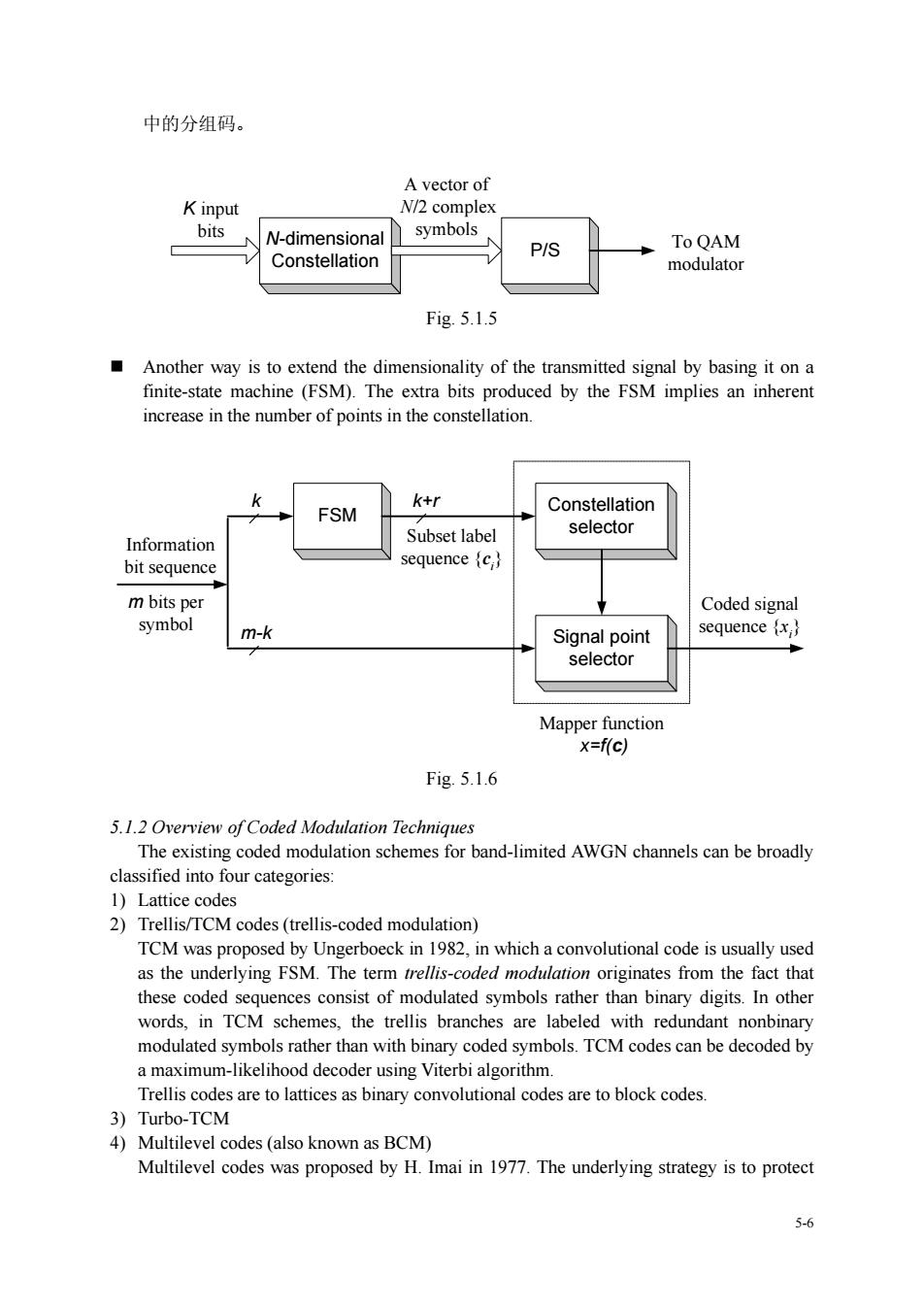正在加载图片...

中的分组码。 A vector of K input W/2 complex bits symbols P/S To QAM Constellation modulator Fig5.1.5 Another way is to extend the dimensionality of the transmitted signal by basing it on a achine (M)Theedd the PM mpnhrent increase in the number of points in the FSM k+r selecto Information Subset label bit sequence (e Coded signal m-k Signal point sequence selector Mapper function x=f(c) Fig.5.1.6 5.1.2 Overview ofCoded Modulation Techniques The existing coded modulation schemes for band-limited AWGN channels can be broadly classified into four categories: 1)Lattice codes 2)Trellis/TCM codes(trellis-coded modulation) TCM was proposed by Ungerboeck is usuallyused as the underlying FSM.The term trellis-coded modulation originates from the fact that these coded sequences consist of modulated symbols rather than binary digits.In other words,in TCM schemes,the trellis branches are labeled with redundant nonbinary modulated symbols rather than with binary coded symbols tcm codes can be decoded by naximu m-likelihood de sing Viterbi alg Trellis codes are to lattices as binary convolutionl codes are to block codes 3)Turbo-TCM 4)Multilevel codes(also known as BCM) Multilevel codes was proposed by H.Imai in 1977.The underlying strategy is to protect 5-65-6 中的分组码。 N-dimensional Constellation P/S K input bits A vector of N/2 complex symbols To QAM modulator Fig. 5.1.5 Another way is to extend the dimensionality of the transmitted signal by basing it on a finite-state machine (FSM). The extra bits produced by the FSM implies an inherent increase in the number of points in the constellation. FSM Constellation selector Signal point selector k k+r m-k Mapper function x=f(c) Coded signal sequence {xi } m bits per symbol Information bit sequence Subset label sequence {ci } Fig. 5.1.6 5.1.2 Overview of Coded Modulation Techniques The existing coded modulation schemes for band-limited AWGN channels can be broadly classified into four categories: 1) Lattice codes 2) Trellis/TCM codes (trellis-coded modulation) TCM was proposed by Ungerboeck in 1982, in which a convolutional code is usually used as the underlying FSM. The term trellis-coded modulation originates from the fact that these coded sequences consist of modulated symbols rather than binary digits. In other words, in TCM schemes, the trellis branches are labeled with redundant nonbinary modulated symbols rather than with binary coded symbols. TCM codes can be decoded by a maximum-likelihood decoder using Viterbi algorithm. Trellis codes are to lattices as binary convolutional codes are to block codes. 3) Turbo-TCM 4) Multilevel codes (also known as BCM) Multilevel codes was proposed by H. Imai in 1977. The underlying strategy is to protect